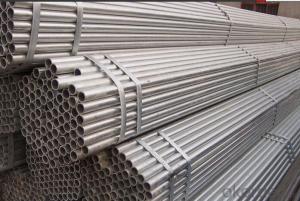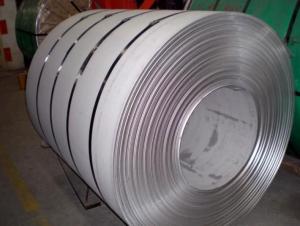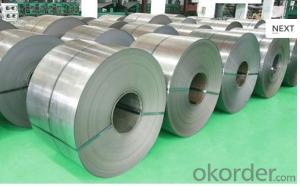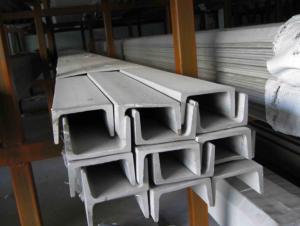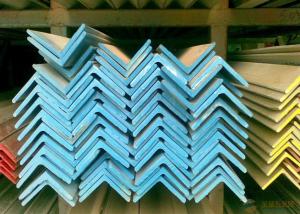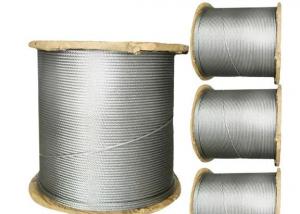PLANTE PIPE
- Loading Port:
- China Main Port
- Payment Terms:
- TT OR LC
- Min Order Qty:
- -
- Supply Capability:
- -
OKorder Service Pledge
OKorder Financial Service
You Might Also Like
ERW pipes are used in Water Pipelines, Agriculture and Irrigation (Water Mains, Sewerage Systems, Industrial Water Lines, Plant Piping, Deep Tube-Wells & Casing Pipes). Other popular application area includes usage in gas pipe lines (pipe lines for natural gas, LPG and other non-toxic gases). The SW is meant for shallow water applications This could be in a canal, natural stream, culvert, or pipe.
Steel Specification:
Thickness: 0.2-3.0mm
Width: 600-1500mm
Coating Mass: Z08,Z12,Z18,Z20,Z22,Z25,Z27,Z35
Z80,Z120,Z180,Z200,Z220,Z250,Z275
Tolerance for thickness,width,flatness and so on conform to the requirements of JIS G3302 or ASTM A653M/924M
Coil ID can be either 508mm or 610mm, maximum coil OD is 2000mm
The speicfication of ASTM Such as A653m,A924 M and so on have been updated to the latest revisions
Application:
BUILDING & CONSTRUCTION
Floor decks, ceilings, verandas, rolling doors, warehouse, partitions, sheds, gutters, wall, underground piping, sashes, beams, fences, scaffolding, indoor decorations, ducts, ventilating pipes, steel frames and cable trays.
ELECTRICAL APPLIANCES
Freezers, video recorder cases, motor cases, lighting fittings, water heaters, washing machines, refrigerators, stoves, air conditioners, dehumidifiers, fluorescent light housings, electrical heaters, toasters, microwave oven enclosures and switch boxes.
TRANSPORTATION
Containers, under body panels, bus & truck body panels, fuel tanks, noise screens, highway signs, air cleaners, conveyor systems and guard rails.
AGRICULTURAL EQUIPMENT
Barns, drying machines, animal houses, hoppers, irrigation systems, greenhouses, water tanks, sheds, silos, agricultural implements and feeders.
FURNITURE & OTHERS
Vending machines, drums, cans, pails, sauna inner parts, chimney pipes, entertainment machines, solar collectors, office equipment, steel furniture, tool boxes, garages and waste bins.
COMPUTER'S APPLIANCES
Computer shells and communication instruments。
Surface Treatment:
Chromating treatment or anti-finger print
Surface Finished:
REGULAR SPANGLE:
Regular spangle is also called normal spangle which is naturally formed without any additional treatment during galvanizing.
MINI SPANGLE:
The spangle is restrained and formed as mini spangle by reducing the lead content in the zinc liquid or by blowing the zinc powder from the equipment installed on the zinc pot.
EXTRA SMOOTH:
The mini spangle is further skin-passed to produce the extra smooth surface.
- Q:Are stainless steel strips resistant to chlorine corrosion?
- In general, stainless steel strips have a resistance to chlorine corrosion. Stainless steel is well-known for its ability to resist both corrosion and staining, making it a great choice for many applications that involve contact with chlorine. This includes swimming pool equipment, water treatment plants, and chemical processing facilities. By adding elements like chromium and nickel to stainless steel, its corrosion resistance is further enhanced. This results in the formation of a protective oxide layer on the surface of the metal, shielding it from the harmful effects of chlorine. However, it's important to note that the corrosion resistance of stainless steel can vary depending on factors such as the specific grade and composition of the alloy, as well as the concentration and temperature of the chlorine solution. Therefore, it is advisable to consult with a stainless steel expert or refer to corrosion resistance charts provided by stainless steel manufacturers to ensure that stainless steel strips are suitable for use in environments rich in chlorine.
- Q:Is stainless steel safe for cooking?
- Yes, stainless steel is generally considered safe for cooking. It is a durable and non-reactive material that does not leach harmful chemicals into food. However, it is important to use high-quality stainless steel cookware and avoid scratching the surface to maintain its safety and integrity.
- Q:Can stainless steel wire be coated or painted?
- Yes, stainless steel wire can be coated or painted. Coating or painting stainless steel wire can be done for various reasons, such as for aesthetic purposes, to provide additional protection against corrosion, or to improve its visibility or durability. However, it is important to note that the coating or paint used should be compatible with stainless steel to ensure proper adhesion and longevity. The stainless steel wire should also be properly cleaned and prepared before applying any coating or paint to ensure a successful and long-lasting finish.
- Q:304 stainless steel ball valve has several standards?
- Stainless steel pneumatic ball valve product name and model II. Stainless steel pneumatic ball valve bore, stainless steel pneumatic ball valve is attached, so that our correct selection for you
- Q:Stainless steel products after heat treatment rust, how to deal with?
- Re solution heat treatment of stainless steel after high temperature rust is because Cr elements in stainless steel at high temperature and C elements combined with compound formed Cr and C of these compounds increased the corrosion and cracking of stainless steel intergranular and because the content of Cr matrix decreased antioxidant capacity also decreased due to rust.
- Q:Can stainless steel be used in the production of architectural hardware?
- Yes, stainless steel can be used in the production of architectural hardware. Stainless steel is a popular choice for architectural hardware due to its durability, corrosion resistance, and aesthetically pleasing appearance. It is commonly used in the production of door handles, hinges, handrails, and other architectural components.
- Q:Can stainless steel channels be used in high-impact or heavy-load applications?
- Stainless steel channels are suitable for high-impact or heavy-load applications due to their exceptional strength, durability, and resistance to corrosion. This makes stainless steel an ideal material for applications that need to withstand heavy loads and impacts. Specifically designed to provide structural support and stability, stainless steel channels are commonly used in various industrial and construction projects. Industries such as transportation, construction, manufacturing, and infrastructure development frequently utilize stainless steel channels for tasks such as supporting heavy machinery, constructing bridges, or installing strong railings. With their reliable strength and stability, stainless steel channels are a dependable choice for high-impact or heavy-load applications.
- Q:Are stainless steel balls used in HVAC systems?
- Indeed, HVAC systems frequently employ stainless steel balls. These balls find widespread application in ball valves, indispensable components of HVAC systems that regulate the flow of various fluids, including air, water, and refrigerants. The preference for stainless steel balls in HVAC systems stems from their resistance to corrosion, durability, and capacity to endure extreme temperatures and pressures. Moreover, stainless steel balls possess exceptional sealing properties, guaranteeing a secure seal and preventing any leakage within the system. Ultimately, the utilization of stainless steel balls in HVAC systems promotes peak performance, efficiency, and longevity of the overall system.
- Q:Do stainless steel bars require any post-weld treatments?
- Yes, stainless steel bars typically require post-weld treatments to restore their corrosion resistance. These treatments can include pickling and passivation processes to remove any impurities and oxide layers formed during welding, ensuring the material remains resistant to corrosion.
- Q:What are the common applications for stainless steel strips?
- Stainless steel strips possess unique properties and versatility, making them widely utilized in various industries. They find applications in: 1. The automotive industry, where they are employed to produce exhaust systems, trim, and decorative elements. Their corrosion resistance and high strength enable them to withstand harsh conditions and ensure durability. 2. The construction industry, where stainless steel strips are frequently used for architectural purposes like cladding, roofing, and façades. Their aesthetic appeal, resistance to corrosion, and low maintenance requirements make them a popular choice for modern buildings. 3. Kitchen appliances, where stainless steel strips are commonly utilized in the production of refrigerators, dishwashers, and ovens. They offer a sleek and hygienic surface, resistance to stains, and ease of cleaning, making them favored materials in the food industry. 4. The medical field, where stainless steel strips are extensively employed for manufacturing surgical instruments, implants, and diagnostic equipment. Their biocompatibility, resistance to corrosion, and sterilization capabilities make them indispensable in healthcare settings. 5. The electronics industry, particularly for shielding purposes in electronic devices. Stainless steel strips provide electromagnetic interference (EMI) protection and are used in electronic enclosures and connectors. 6. The aerospace industry, where stainless steel strips are utilized for various applications, including aircraft components, engine parts, and structural elements. They offer high strength, heat resistance, and corrosion resistance, ensuring safety and reliability in extreme conditions. 7. The energy sector, where stainless steel strips are used in power plants, oil and gas pipelines, and renewable energy systems. They exhibit resistance to high temperatures, corrosion, and mechanical stress, making them suitable for these demanding environments. In summary, stainless steel strips are extensively employed in a wide range of applications due to their exceptional properties, including corrosion resistance, strength, durability, and aesthetic appeal.
1. Manufacturer Overview |
|
|---|---|
| Location | |
| Year Established | |
| Annual Output Value | |
| Main Markets | |
| Company Certifications | |
2. Manufacturer Certificates |
|
|---|---|
| a) Certification Name | |
| Range | |
| Reference | |
| Validity Period | |
3. Manufacturer Capability |
|
|---|---|
| a)Trade Capacity | |
| Nearest Port | |
| Export Percentage | |
| No.of Employees in Trade Department | |
| Language Spoken: | |
| b)Factory Information | |
| Factory Size: | |
| No. of Production Lines | |
| Contract Manufacturing | |
| Product Price Range | |
Send your message to us
PLANTE PIPE
- Loading Port:
- China Main Port
- Payment Terms:
- TT OR LC
- Min Order Qty:
- -
- Supply Capability:
- -
OKorder Service Pledge
OKorder Financial Service
Similar products
New products
Hot products
Related keywords
